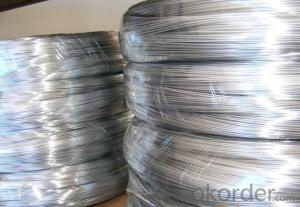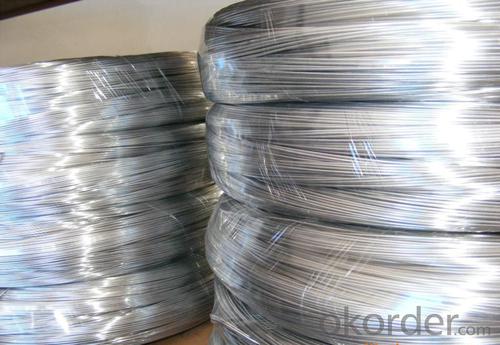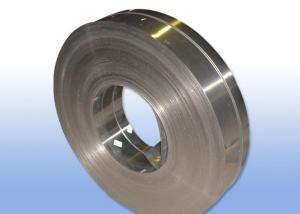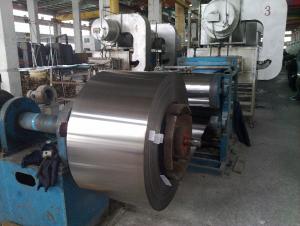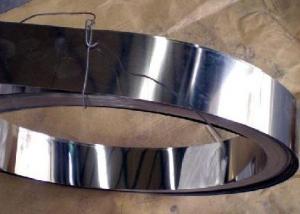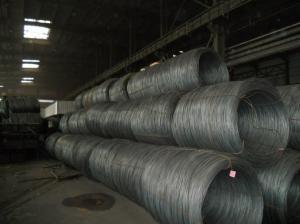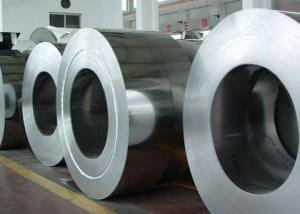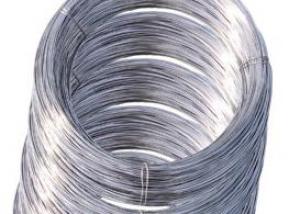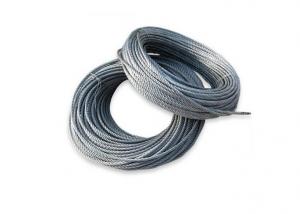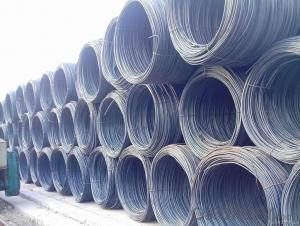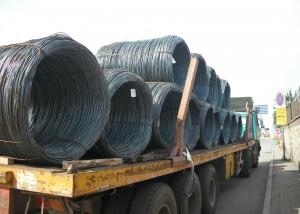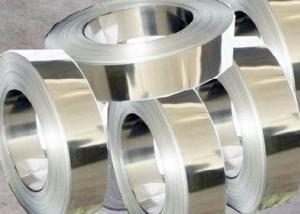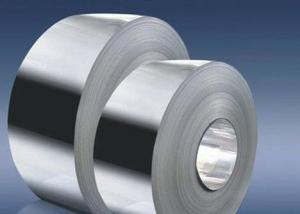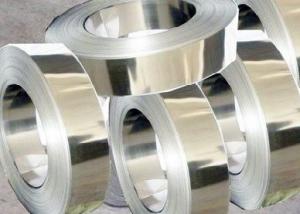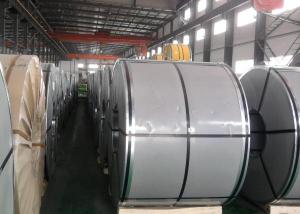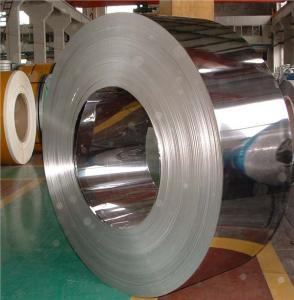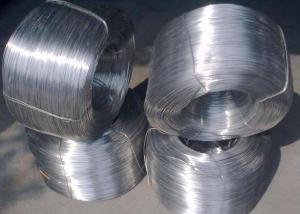stainless steel wire
- Loading Port:
- China Main Port
- Payment Terms:
- TT OR LC
- Min Order Qty:
- -
- Supply Capability:
- -
OKorder Service Pledge
OKorder Financial Service
You Might Also Like
Specifications
high tensile strength stainless steel spring wire
1.Factory price
2.Customized size
3.fast delivery
4.Certificate:ISO
stainless steel wire
As a professional manufacturer, we can provide different size of Wire with good quality and reasonable price.
Specifications:
1) Grade: 201,202,301,303,304,304L,305,316,316L,321,410,416,420,430...
1.4301, 1.4306, 1.4845, 1.4401, 1.4371, 1.4597,1.4541, etc
2) Standard: ASTM, EN,DIN,JIS
3) Diameter: 0.05-20mm
4) Surface: bright, cloudy,plain,black
5) Type: spring,welded,tig,mig etc
soft and hard
6) Packing: in coil or in spool then in carton or as your request
Terms:
1) Loading Port: Shanghai or Hongkong
2) Delivery term: FOB,CFR, CIF
3) Delivery lead time: 10 working days after received deposit.
4) Payment term:30% by T/T as deposit., balance will be paid by T/T ,
5) Quality assurance: Mill Test Certificate is supplied with shipment, third Party Inspection is acceptable
Product Application:
With bright surface, slight magnetism and no cracks on forming, is widely used in bicycle fittings, kitchen and sanitation tools, goods shelf, pet cages, gill racks, decorative handles and baskets, food and medical machinery accesses, etc.
Our advantage:
Our range of Wire made of Stainless Steel are not only known for their variety but are also known for their good quality, long life and very reasonable prices. Quality and service is our first priority, we effectively use technically advanced machinery equipment and the expertise of our work to deliver our stainless steel wired products
| Type AISI | C Max % | Mn Max % | P Max% | S Max% | Si Max% | Cr% | Ni% | Mo% |
| 201 | 0.15 | 5.50-7.50 | 0.06 | 0.03 | 1 | 16.000-18.00 | 0.5 | - |
| 202 | 0.15 | 7.50-10.00 | 0.06 | 0.03 | 1 | 17.00-19.00 | 3.-0-5.00 | - |
| 204CU | 0.08 | 6.5-8.5 | 0.06 | 0.03 | 2 | 16.0-17.0 | 1.5-3.0 | - |
| 302 | 0.15 | 2 | 0.045 | 0.03 | 1 | 17.00-19.00 | 8.00-10.00 | - |
| 302HQ/ | 0.03 | 2 | 0.045 | 0.02 | 1 | 17.00-19.00 | 9.00-10.00 | - |
| 304CU | ||||||||
| 304HC | 0.04 | 0.80-1.70 | 0.04 | 0.015 | 0.3-0.6 | 18-19 | 8.5-9.5 | - |
| 303 | 0.07 | 2 | 0.045 | 0.25 Min | 1 | 17-19 | 8.0-10.0 | 0.6 |
| 304 | 0.08 | 2 | 0.045 | 0.03 | 1 | 18.00-20.00 | 8.0-10.50 | - |
| 304L | 0.03 | 2 | 0.045 | 0.03 | 1 | 18.00-20.00 | 8.00-12.00 | - |
| 310 S | 0.055 | 1.5 | 0.04 | 0.005 | 0.7 | 25.0-28.0 | 19-22 | - |
| 314 | 0.25 | 2 | 0.045 | 0.03 | 1.50-3.00 | 23.00-26.00 | 19.00-22.00 | - |
| 316 | 0.06 | 2 | 0.045 | 0.03 | 1 | 16.00-18.00 | 10.00-14.00 | 2.00-3.00 |
| 316L | 0.03 | 2 | 0.045 | 0.03 | 1 | 16.00-18.00 | 10.00-14.00 | 2.00-3.00 |
| 316Ti | 0.08 | 2 | 0.045 | 0.03 | 0.75 | 16.00-18.00 | 10.00-14.00 | 2.00-3.00 |
| 347 | 0.08 | 2 | 0.045 | 0.03 | 1 | 17.00-19.00 | 9.00-13.00 | - |
| 321 | 0.06 | 2 | 0.045 | 0.01 | .40-.60 | 17-19.00 | 9.4-9.6 | - |
| ER308 | 0.08 | 2 | 0.045 | 0.03 | 1 | 17-19 | 9.5-13.0 | - |
| ER308L | 0.025 | 1.50/2.00 | 0.025 | 0.02 | 0.5 | 19.0/21.0 | 9.5/11.0 | - |
| ER309 | 0.08 | 1.50/2.50 | 0.02 | 0.015 | 0.5 | 23.0/25.0 | 20.0/14.0 | - |
| ER309L | 0.025 | 1.50/2.50 | 0.02 | 0.015 | 0.5 | 23.0/25.0 | 12.0/14.0 | - |
| ER316L | 0.02 | 1.50/2.00 | 0.02 | 0.02 | 0.5 | 18.0/20.0 | 12.00-14.00 | 2.00-3.00 |
| 430L | 0.03 | 1 | 0.04 | 0.03 | 1 | 16.00-18.00 | - | |
| 434 | 0.08 | 1 | 0.04 | 0.03 | 1 | 16.00-18.00 | - | 0.90-1.40 |
- Q: What are the different types of stainless steel wire ropes used in sports equipment?
- The different types of stainless steel wire ropes commonly used in sports equipment include 1x19, 7x7, and 7x19 constructions. These wire ropes vary in terms of their flexibility, strength, and resistance to corrosion, making them suitable for different applications in sports equipment such as cables for gym equipment, suspension systems for aerial sports, and safety harnesses for climbing.
- Q: What are the different types of stainless steel wire for different levels of resistance to creep?
- There are several different types of stainless steel wire available that offer varying levels of resistance to creep. Creep refers to the gradual deformation of a material under constant stress over time, especially at high temperatures. The different types of stainless steel wire can be categorized into three main groups based on their resistance to creep: 1. Austenitic Stainless Steel Wire: Austenitic stainless steel wires, such as grade 304 and grade 316, have excellent resistance to creep. These wires are highly stable at high temperatures and can withstand prolonged exposure to stress without significant deformation. They are commonly used in applications that require high resistance to creep, such as in aerospace, chemical processing, and nuclear power plants. 2. Ferritic Stainless Steel Wire: Ferritic stainless steel wires, like grade 430, offer moderate resistance to creep. While not as resistant as austenitic stainless steel, they still provide satisfactory performance under certain conditions. Ferritic stainless steel wires are commonly used in applications that involve elevated temperatures but do not require the same level of creep resistance as austenitic grades. They are often found in automotive exhaust systems, heat exchangers, and some architectural applications. 3. Martensitic Stainless Steel Wire: Martensitic stainless steel wires, including grades 410 and 420, have the lowest resistance to creep among the three types. While they are not typically used in applications that require high resistance to creep, they still offer good mechanical properties and can be suitable for certain low-stress applications. Martensitic stainless steel wires are commonly used in cutlery, surgical instruments, and some industrial equipment. It is important to note that the resistance to creep of stainless steel wire can also be influenced by factors such as the specific alloy composition, heat treatment, and manufacturing process. Therefore, it is essential to consult with materials engineers or industry experts to determine the most suitable stainless steel wire for a particular application based on the desired resistance to creep.
- Q: What are the common uses of stainless steel wire in the telecommunications industry?
- Stainless steel wire is widely used in the telecommunications industry due to its unique properties that make it suitable for various applications. Some common uses of stainless steel wire in the telecommunications industry include: 1. Guy wires: Stainless steel wire is often used as guy wires to provide stability and support to telecommunication towers and antennas. These wires are strong and resistant to corrosion, making them ideal for withstanding harsh weather conditions and ensuring the structural integrity of the towers. 2. Cable reinforcement: Stainless steel wire is used as reinforcement in telecommunications cables to enhance their strength and durability. These wires are typically wrapped around the cables to provide mechanical support and prevent them from stretching or breaking during installation or transportation. 3. Antenna elements: Stainless steel wire is commonly used as antenna elements in various telecommunication systems. These wires are chosen for their high electrical conductivity and resistance to corrosion, allowing for efficient signal transmission and reception. 4. Grounding applications: Stainless steel wire is employed in grounding applications for telecommunication equipment and infrastructure. Grounding wires made of stainless steel ensure a reliable electrical connection to the earth, protecting the equipment from power surges and lightning strikes. 5. Suspension systems: Stainless steel wire is used in suspension systems to hang and support various telecommunication equipment, such as fiber optic cables. These wires provide strength and stability to prevent sagging or damage to the cables over long distances. Overall, stainless steel wire plays a crucial role in the telecommunications industry by offering strength, durability, and corrosion resistance, ensuring the efficient and reliable operation of telecommunication systems and infrastructure.
- Q: Is stainless steel wire suitable for wire rope saddles?
- Indeed, wire rope saddles can be made suitable by utilizing stainless steel wire. The exceptional strength and resistance to corrosion associated with stainless steel render it a highly suitable material for a wide range of purposes, including wire rope saddles. These saddles, constructed from stainless steel wire, find widespread usage in industries such as marine, construction, and transportation, where dependability and durability are paramount. Furthermore, stainless steel wire rope saddles demonstrate remarkable resilience in adverse environmental conditions, enduring exposure to moisture, chemicals, and extreme temperatures, thus guaranteeing enduring efficacy and safety.
- Q: Can stainless steel wire be used for HVAC ductwork?
- Yes, stainless steel wire can be used for HVAC ductwork. Stainless steel is known for its durability, corrosion resistance, and high strength, making it an excellent choice for ductwork in HVAC systems. Stainless steel wire is commonly used to reinforce and provide structural support to ductwork, ensuring it maintains its shape and integrity even under high pressure or temperature conditions. Additionally, stainless steel is non-reactive and does not release any harmful substances, making it safe for use in HVAC systems. Overall, using stainless steel wire for HVAC ductwork provides a reliable and long-lasting solution.
- Q: What are the different weaving patterns available for stainless steel wire mesh?
- There are several different weaving patterns available for stainless steel wire mesh, each with its own unique characteristics and uses. Some of the most common weaving patterns include plain weave, twill weave, and Dutch weave. 1. Plain weave: This is the simplest and most commonly used weaving pattern for stainless steel wire mesh. In this pattern, the wires are woven over and under each other in a simple crisscross pattern, creating a tight and strong mesh. Plain weave wire mesh has equal-sized openings and is ideal for applications that require high strength and filtration. 2. Twill weave: In twill weave, the wires are woven in a diagonal pattern, creating a distinctive diagonal line effect. This pattern provides a higher degree of stability and strength compared to plain weave. Twill weave stainless steel mesh is often used in applications that require heavy-duty filtration, such as in mining or industrial settings. 3. Dutch weave: Dutch weave is a unique weaving pattern that features a combination of thick and thin wires. In this pattern, the warp wires (running parallel to the length of the mesh) are thicker than the weft wires (running parallel to the width of the mesh). This creates a tightly woven mesh with smaller openings and excellent filtration capabilities. Dutch weave stainless steel wire mesh is commonly used for fine filtration applications, such as in the pharmaceutical or food processing industries. These are just a few examples of the weaving patterns available for stainless steel wire mesh. Each pattern offers different levels of strength, stability, and filtration capabilities, allowing for a wide range of applications across various industries.
- Q: Stainless steel wire drawing faucet, OK?
- Now most of the market is copper bibcock, the price is low, very popular, but the cost is low, not environmental protection, lead, long-term use of the human body is certainly harmful, and long-term test rate or choose stainless steel head, reliable. Brushed stainless steel leading beautiful significant level, the price will be high, but also the leading decoration will be a new, or suggest a change in the selection of good quality products, reduce the menace from the rear you can go to find out, Wei Jerome or Bullock America leader, they are in the field of stainless steel professional brand,
- Q: Is stainless steel wire suitable for springs in corrosive environments?
- Yes, stainless steel wire is suitable for springs in corrosive environments. Stainless steel has excellent corrosion resistance properties, making it highly resistant to rust and corrosion. This makes stainless steel wire an ideal choice for springs that will be exposed to corrosive elements, ensuring their longevity and performance in such environments.
- Q: How does the composition of stainless steel affect its properties?
- The composition of stainless steel directly affects its properties, such as its corrosion resistance, strength, and heat resistance. The addition of chromium provides the stainless steel with its corrosion resistance by forming a thin, protective oxide layer on its surface. Other elements like nickel and molybdenum can enhance its corrosion resistance further. Additionally, the amount of carbon in stainless steel affects its strength and hardness, with higher carbon content resulting in increased strength but reduced corrosion resistance. Therefore, the composition of stainless steel plays a crucial role in determining its overall properties.
- Q: Can stainless steel wire be used for wire drawing?
- Yes, stainless steel wire can be used for wire drawing. Wire drawing is a metalworking process where a wire is pulled through a die to reduce its diameter. Stainless steel wire is often used in wire drawing applications due to its high strength, durability, and corrosion resistance. It can be drawn to various diameters depending on the specific requirements of the application. Stainless steel wire is commonly used in industries such as aerospace, automotive, construction, and electronics, where high-quality and reliable wire products are needed.
Send your message to us
stainless steel wire
- Loading Port:
- China Main Port
- Payment Terms:
- TT OR LC
- Min Order Qty:
- -
- Supply Capability:
- -
OKorder Service Pledge
OKorder Financial Service
Similar products
Hot products
Hot Searches
Related keywords
